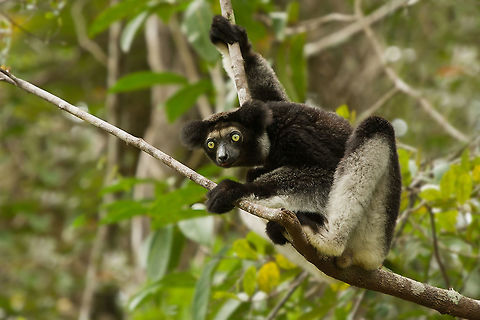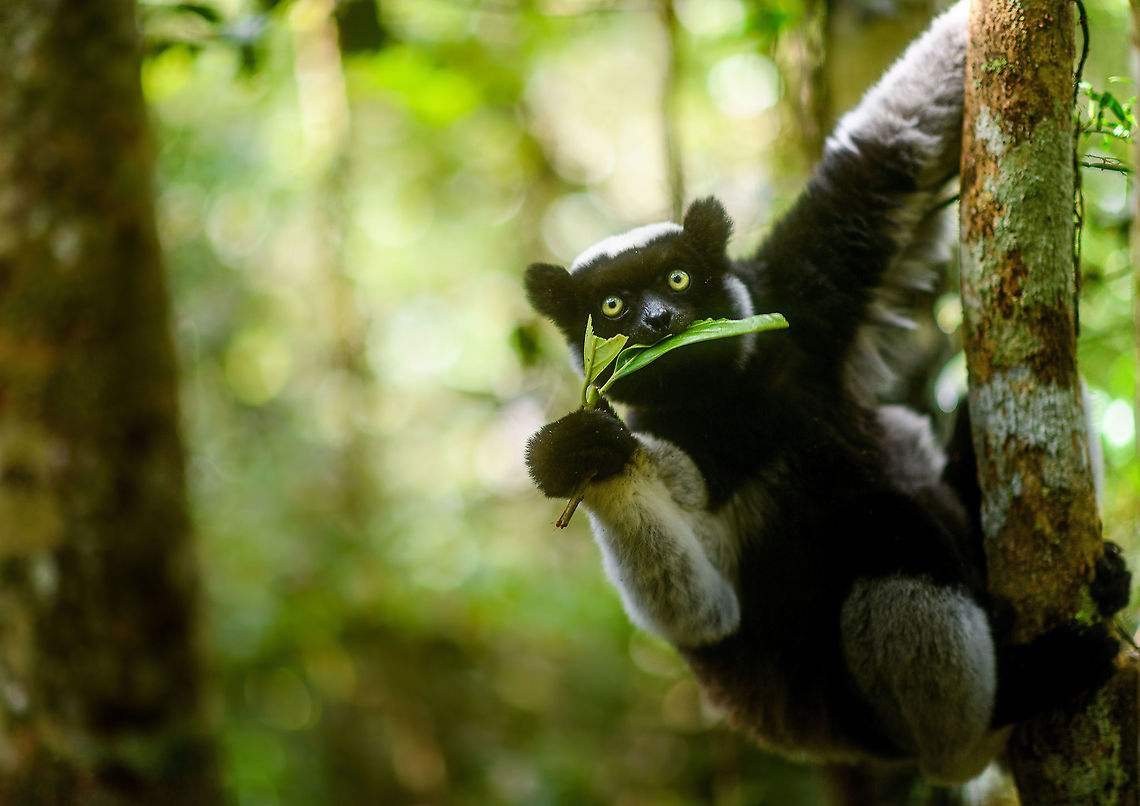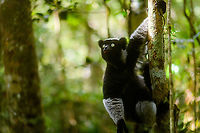
The indri, also called the babakoto, is one of the largest living lemurs. It is a diurnal tree-dweller related to the sifakas and, like all lemuroids, it is native to Madagascar.
Similar species: Primates
By Ferdy Christant
All rights reserved
Uploaded Nov 19, 2019. Captured Jul 20, 2019 11:13.



comments (7)
Critically endangered, the Indri (Indri indri) is literally teetering on the edge of existence, mainly because of habitat loss. They are one of the most endangered primates on Earth. Endemic to Madagascar, they live in small, female-dominant family groups that consist of the mated male and female pair, in addition to their immature offspring. However, indri often end up living in larger groups because habitat fragmentation prevents them from breaking off into smaller units. Not just that, but highly fragmented populations inhibit gene exchange. It will only be a matter of time before the species suffers a population bottleneck after which, genetic variation will be lost.
The indri is diurnal, and they start their day with synchronous, group defecation, followed by foraging for the rest of the day. One really cool thing about the indri (aside from pooping in sync) is that they sing beautiful, eerie songs. Their songs can be heard at distances up to up to 1.25 mi (2 km) away! The sound is described as a strange amalgam of an air-horn, whale song, and a balloon losing air. They sing in a group, much like a chorus and seem to synchronize their rhythm. The songs are thought to have territorial and other communicative purposes. The juvenile males seem to purposely sing off-key, perhaps to show off or else just to fulfill a rebellious teenage stereotype.
They are a monogamous species, and only seek a new mate if their partner dies. They don’t reach sexual maturity until at least age seven, with females only giving birth to one baby every 2-3 years. And, sadly, infant mortality is as high as 50%. The fact that they mature later in life and don’t reproduce yearly is a huge problem because indri populations can’t keep up, nor can they overcome the burden of habitat loss. To further complicate things, no indri has ever survived more than one year in captivity and breeding attempts have been completely unsuccessful. Researchers conclude that life in the wild cannot be replicated in captivity for the indri.
As an arboreal species, the indri spends most of its time in the forest canopy where they absolutely depend on large tracts of undisturbed forest for survival. Unfortunately, in Madagascar, the forests are shrinking. The Malagasy people hold lemurs in very high regard, but they are often left without any other option than to cut trees for fuel, income, and agriculture. Their undeveloped economy doesn’t provide them the luxury of more sustainable choices, and they have no other means to survive. The subsequent deforestation has decimated Madagascar’s wildlife, 80% of which are endemic to the island and are found nowhere else on Earth. Madagascar is truly a world apart. Every single species is an integral part of the ecosystem. They all contribute. Each one matters and cannot be replaced. The loss of even one species is felt by many. The indri is merely one of many devastated species. Right now, Madagascar is a paradise in peril. But, before long, it may become a paradise lost.
Clearly, one of the main ways to save the indri, in addition to others, is to protect its habitat. Conservation programs are working to preserve habitat, and hopefully they will succeed in providing safe havens for these beloved animals in addition to a sustainable future for the Malagasy people. {Spotted in Madagascar by JungleDragon founder, Ferdy Christant} #JungleDragon #Indri #Indriindri #lemur #Madagascar Posted 6 years ago
That was before COVID. Already getting word from our former guide that even the poorly protected national parks, are now having no protection at all. People plunder it out of desperation. I normally try to find some sign of hope. But I truly cannot find one for Madagascar. Most is already lost and the pace at which the last bits disappear is increasing.
There is no other place on the planet which had an independent evolution for so long, with >90% of anything living there endemic to it. My heart cries for both its people and its wildlife. Posted 5 years ago
To be clear, there's still some pockets of hope for remaining wildlife in key hotspots around the world, meaning we should not give up on it, but Madagascar I single out as different. It really is heading for a "game over" scenario. Posted 5 years ago